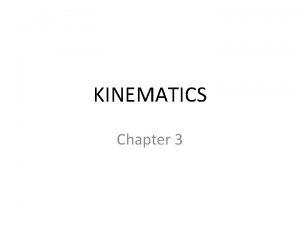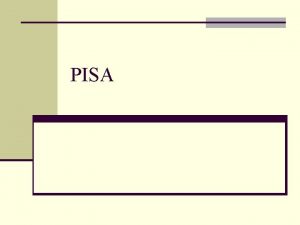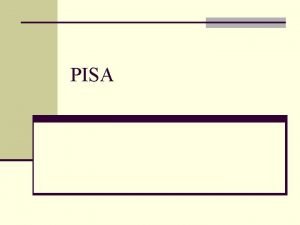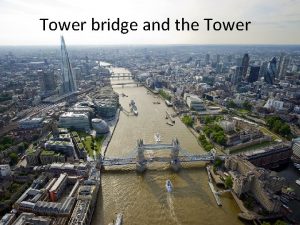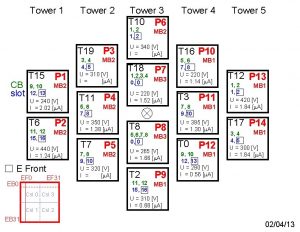Case Study 1 Tower of Pisa Tower of












- Slides: 12

Case Study 1 : Tower of Pisa

Tower of Pisa Ø During building, in the 12 th century, the tower began to lean to one side so that the works were suspended.

Tower of Pisa Ø A century later when the works recommenced, having partly corrected the inclination, the tower began to lean to the other side and has never stopped since.

Tower of Pisa Ø Today, the structure has reached a horizontal displacement at the top, of around 5 in, an inclination of 5' 28', an eccentricity of the dead load resultant force with

Continue… respect to the baricentrum of the foundation of 2. 27 m which gives an overtuning moment of 32, 900 tons and an average vertical settlement of about 2. 5 m.

Tower of Pisa ØThe displacements of the foundation are prevalently vertical but a small horizontal movement has also been surveyed with upstream direction so that the centre of rotation is many meters higher that the foundation level. Fig 1 Section of the Tower of Pisa

Tower of Pisa Ø The causes of the phenomenon are the deformability of the underlying clays, where the pressure is progressively increasing due to the

Continue… inclination, and subsidence due to the variation of the piezonietric level caused by water being extracted from the many wells in the area.

Tower of Pisa Ø A few years ago, to reduce the overturning moment, some lead blocks (760 t) were placed on the upstream side of the tower, over a provisional reinforced concrete ring, reducing the overturning moment of about 20% ( change in M = 6300 KNm) (refer to next slide)

Tower of Pisa Fig 2 Lead blocks placed on the base of the tower to reduce overturning moment

Tower of Pisa Fig 3 Possible schemes for the provisional safeguard system

Tower of Pisa Fig 4 Axonometric view of provisional safeguard systems
 Leaning tower of pisa fails
Leaning tower of pisa fails A one euro coin is dropped from the leaning tower
A one euro coin is dropped from the leaning tower Best case worst case average case
Best case worst case average case Project failure case study
Project failure case study Difference between short case and long case
Difference between short case and long case Average case of binary search
Average case of binary search Glennan building cwru
Glennan building cwru Bubble sort algorithm pseudocode
Bubble sort algorithm pseudocode Bubble sort best case and worst case
Bubble sort best case and worst case Bubble sort best case and worst case
Bubble sort best case and worst case What is a unique triangle
What is a unique triangle Mis zara
Mis zara Yelp case study presentation
Yelp case study presentation

